Do you have a question about the Panasonic Viera TH-L32C3M and is the answer not in the manual?
Details safety warnings and cautions for safe operation of the TV.
Provides supplementary information and important tips for users.
Instructions for safely handling power cords and plugs to prevent hazards.
Guidelines for power connection and safe TV placement.
Covers warnings about modifications, environment, foreign objects, placement, and SD card handling.
Guidelines for cleaning the TV and unplugging for long periods of non-use.
Advice on ensuring proper airflow and avoiding damage from impact or heat.
Warning regarding excessive headphone volume and potential hearing damage.
Explains the automatic standby feature and its conditions.
Advice on keeping the TV away from electronic interference sources.
Instruction for transporting the TV in an upright position.
Lists included accessories such as remote control and batteries.
Information on available accessories that can be purchased separately.
Critical safety warnings for installing wall mounting brackets.
Safety warnings and cautions for pedestal assembly and TV mounting.
Step-by-step guide for assembling the TV pedestal.
Instructions on how to securely attach the TV to the assembled pedestal.
Important warnings regarding battery insertion and handling to prevent damage.
Diagram and explanation of TV's rear connection ports.
Guidance on connecting aerial, satellite, set-top boxes, and HDMI devices.
Important notes regarding cable placement and signal quality.
Identifies USB, SD Card, AV terminals, headphone jack, and signal receiver.
Explains functions of buttons like Function select, Channel Up/Down, Input mode, Power.
Explains how to use the on-screen operation guide.
Detailed explanation of each button on the remote control and its function.
Step-by-step guide to automatically search and store TV channels.
Explains the difference between Home and Shop viewing modes.
Steps for turning on the TV, selecting mode, and changing channels.
How to freeze or unfreeze the picture.
Instructions for setting the automatic TV turn-off timer.
How to change colour, teletext, MPX, and volume settings.
Details various aspect ratio options like 16:9, 4:3, and Zoom.
Important notes regarding aspect ratio usage in different modes.
Explains the two main teletext modes: FASTEXT and List.
Step-by-step guide to accessing and navigating teletext pages.
Details on using HOLD, INDEX, and calling up favourite pages.
Describes viewing TV and teletext simultaneously.
Instructions on how to save frequently viewed teletext pages.
Covers viewing sub pages, specific pages, and watching TV during updates.
How to access the menu to select input sources.
Guide to choosing between AV, PC, HDMI, and other input sources.
How to view content from connected external devices.
Steps to display and select features like Photo, Video, Music.
Instructions for using VIERA Link to control connected equipment.
How to operate specific VIERA TOOLS features.
How to display, select, and adjust settings within the TV menus.
Instructions for entering text or names using the on-screen keyboard.
Explains different picture modes like Dynamic, Normal, Cinema, Game.
Details settings for Backlight, Contrast, Brightness, Colour, Sharpness, Tint, Colour Balance.
Covers Channel Colour Set, Vivid Colour, Eco Mode, P-NR, and 3D-COMB.
Settings for screen display and adjusting white balance.
Options for gamma curves and 16:9 overscan adjustment.
Configuration for AV Colour System, Colour Matrix, and DVI input.
Options for selecting and configuring sound modes like Music, Speech, User.
Adjusting low/high frequencies and customising sound quality.
Adjusting volume levels and surround sound effects.
Adjusting speaker distance and selecting multiplex sound modes.
Configuring digital audio output and HDMI input types.
Adjusting input resolution, clock, H/V position, and sync for PC connection.
Resetting PC settings and accessing tuning options.
Lists setup options like Eco Navigation, Child Lock, OSD Language.
Configuring teletext display and input terminal labels.
Settings for VIERA Link features and power saving.
Managing standby modes for power efficiency.
Steps to register for DivX Video-on-Demand content.
Resetting TV to factory settings and viewing system information.
Steps to prepare for channel tuning by selecting TV mode.
Guide for performing automatic channel tuning using the remote or TV buttons.
How to skip unwanted channels and manage the channel list.
Procedures for editing channel names and positions.
Step-by-step guide for automatic channel scanning.
Instructions for manual channel selection and fine-tuning signal reception.
Steps to activate and set a PIN for channel or input locking.
How to select specific channels or inputs to be locked.
Instructions for modifying the existing Child Lock PIN.
Guide to naming or skipping input terminals for easier selection.
How to enter custom names for input sources.
Step-by-step process to restore the TV to its original factory condition.
How to confirm the reset and follow on-screen instructions.
Introduction to enjoying photos, videos, and music via SD Card or USB.
Instructions for handling SD cards and USB flash memory.
Steps to insert media and switch to the Media Player input.
How to choose between Photo, Video, or Music modes.
How thumbnails of photos are displayed and managed.
Options to sort photos by folder, date, or month.
How to view details of a selected photo.
Options for frame styles, colour effects, and transition effects.
Settings for screen display during slideshows and playback intervals.
How to select and register background music for photo slideshows.
How video titles and scenes are presented with previews.
Instructions for selecting a title and starting playback.
Confirming or changing settings like multi-audio, subtitles, and aspect ratio.
Configuring audio output using HDMI terminals, including SPDIF selection.
How to navigate and play music files from folders or directly.
Operating playback functions like rewind, pause, and stop for music.
Settings for music playback repeat modes.
Introduction to VIERA Link and its HDAVI Control capabilities.
Overview table of features supported by VIERA Link with different equipment.
Diagrams and instructions for connecting compatible devices via HDMI and RCA.
Important notes regarding VIERA Link connections and cable requirements.
Steps to set up the TV and connected equipment for VIERA Link.
Details on Power on/off Link, Standby Power Save, and Intelligent Auto Standby.
How to pause and resume live TV programs using a DIGA Recorder.
Controls for pausing, searching, and stopping live TV playback.
How to immediately record the current program using a DIGA Recorder.
Instructions for stopping the recording process.
How to control external devices using the TV remote via VIERA Link.
Steps to access and navigate the menus of connected equipment.
How to control home cinema speakers via the TV remote.
Selecting between home cinema or TV speakers for audio output.
Instructions for enjoying multi-channel audio with amplifiers.
Table showing recommended connections for various equipment types.
Diagram showing the pin configuration of the HDMI terminal.
Diagrams for connecting video playback devices.
Instructions for connecting devices via HDMI.
Diagrams for connecting DVD players for viewing and listening.
Instructions for connecting amplifiers and speaker systems.
Instructions for connecting USB flash drives and other USB devices.
Diagrams for connecting video cameras and game equipment.
Instructions for connecting headphones and computers.
Table showing channel assignments for various regions and broadcast systems.
Information on HDMI features, signals, and compatibility.
Instructions for connecting devices with DVI output using an adapter.
Guide to connecting a PC using the D-sub 15-pin connector.
Lists compatible signal formats for Component and HDMI inputs.
Details compatible scanning frequencies for PC input.
How to choose between Stereo, Mono, NICAM, and Bilingual sound.
Information on SD Card and USB Flash Memory compatibility.
Explains common messages and their meanings.
Details supported image file types like JPEG.
Lists supported video container and codec formats.
Supported audio file formats like MP3, AAC, WMA.
How to use subtitle files with DivX videos.
Steps to register for DivX Video-on-Demand content.
Recommendations for connecting USB devices.
Troubleshooting steps for white spots, shadow images, and panel movement.
Solutions for problems with missing image or sound.
Explanation of pixel characteristics on the LCD screen.
Actions for chaotic images, no display, blurry images, and unusual displays.
Solutions for no sound, low volume, or unusual sound output.
Troubleshooting steps for HDMI connections and external equipment.
Solutions for TV entering standby mode unexpectedly or remote control problems.
Instructions for cleaning the display panel, cabinet, and pedestal.
Guidance on cleaning the power plug.
Note regarding disposal outside the European Union.
Technical details on power consumption, display panel, and aspect ratio.
Information on receiving systems, channels, and input terminals.
Details on AV, HDMI, PC, and USB connection specifications.
Physical specifications of the TV.
Details safety warnings and cautions for safe operation of the TV.
Provides supplementary information and important tips for users.
Instructions for safely handling power cords and plugs to prevent hazards.
Guidelines for power connection and safe TV placement.
Covers warnings about modifications, environment, foreign objects, placement, and SD card handling.
Guidelines for cleaning the TV and unplugging for long periods of non-use.
Advice on ensuring proper airflow and avoiding damage from impact or heat.
Warning regarding excessive headphone volume and potential hearing damage.
Explains the automatic standby feature and its conditions.
Advice on keeping the TV away from electronic interference sources.
Instruction for transporting the TV in an upright position.
Lists included accessories such as remote control and batteries.
Information on available accessories that can be purchased separately.
Critical safety warnings for installing wall mounting brackets.
Safety warnings and cautions for pedestal assembly and TV mounting.
Step-by-step guide for assembling the TV pedestal.
Instructions on how to securely attach the TV to the assembled pedestal.
Important warnings regarding battery insertion and handling to prevent damage.
Diagram and explanation of TV's rear connection ports.
Guidance on connecting aerial, satellite, set-top boxes, and HDMI devices.
Important notes regarding cable placement and signal quality.
Identifies USB, SD Card, AV terminals, headphone jack, and signal receiver.
Explains functions of buttons like Function select, Channel Up/Down, Input mode, Power.
Explains how to use the on-screen operation guide.
Detailed explanation of each button on the remote control and its function.
Step-by-step guide to automatically search and store TV channels.
Explains the difference between Home and Shop viewing modes.
Steps for turning on the TV, selecting mode, and changing channels.
How to freeze or unfreeze the picture.
Instructions for setting the automatic TV turn-off timer.
How to change colour, teletext, MPX, and volume settings.
Details various aspect ratio options like 16:9, 4:3, and Zoom.
Important notes regarding aspect ratio usage in different modes.
Explains the two main teletext modes: FASTEXT and List.
Step-by-step guide to accessing and navigating teletext pages.
Details on using HOLD, INDEX, and calling up favourite pages.
Describes viewing TV and teletext simultaneously.
Instructions on how to save frequently viewed teletext pages.
Covers viewing sub pages, specific pages, and watching TV during updates.
How to access the menu to select input sources.
Guide to choosing between AV, PC, HDMI, and other input sources.
How to view content from connected external devices.
Steps to display and select features like Photo, Video, Music.
Instructions for using VIERA Link to control connected equipment.
How to operate specific VIERA TOOLS features.
How to display, select, and adjust settings within the TV menus.
Instructions for entering text or names using the on-screen keyboard.
Explains different picture modes like Dynamic, Normal, Cinema, Game.
Details settings for Backlight, Contrast, Brightness, Colour, Sharpness, Tint, Colour Balance.
Covers Channel Colour Set, Vivid Colour, Eco Mode, P-NR, and 3D-COMB.
Settings for screen display and adjusting white balance.
Options for gamma curves and 16:9 overscan adjustment.
Configuration for AV Colour System, Colour Matrix, and DVI input.
Options for selecting and configuring sound modes like Music, Speech, User.
Adjusting low/high frequencies and customising sound quality.
Adjusting volume levels and surround sound effects.
Adjusting speaker distance and selecting multiplex sound modes.
Configuring digital audio output and HDMI input types.
Adjusting input resolution, clock, H/V position, and sync for PC connection.
Resetting PC settings and accessing tuning options.
Lists setup options like Eco Navigation, Child Lock, OSD Language.
Configuring teletext display and input terminal labels.
Settings for VIERA Link features and power saving.
Managing standby modes for power efficiency.
Steps to register for DivX Video-on-Demand content.
Resetting TV to factory settings and viewing system information.
Steps to prepare for channel tuning by selecting TV mode.
Guide for performing automatic channel tuning using the remote or TV buttons.
How to skip unwanted channels and manage the channel list.
Procedures for editing channel names and positions.
Step-by-step guide for automatic channel scanning.
Instructions for manual channel selection and fine-tuning signal reception.
Steps to activate and set a PIN for channel or input locking.
How to select specific channels or inputs to be locked.
Instructions for modifying the existing Child Lock PIN.
Guide to naming or skipping input terminals for easier selection.
How to enter custom names for input sources.
Step-by-step process to restore the TV to its original factory condition.
How to confirm the reset and follow on-screen instructions.
Introduction to enjoying photos, videos, and music via SD Card or USB.
Instructions for handling SD cards and USB flash memory.
Steps to insert media and switch to the Media Player input.
How to choose between Photo, Video, or Music modes.
How thumbnails of photos are displayed and managed.
Options to sort photos by folder, date, or month.
How to view details of a selected photo.
Options for frame styles, colour effects, and transition effects.
Settings for screen display during slideshows and playback intervals.
How to select and register background music for photo slideshows.
How video titles and scenes are presented with previews.
Instructions for selecting a title and starting playback.
Confirming or changing settings like multi-audio, subtitles, and aspect ratio.
Configuring audio output using HDMI terminals, including SPDIF selection.
How to navigate and play music files from folders or directly.
Operating playback functions like rewind, pause, and stop for music.
Settings for music playback repeat modes.
Introduction to VIERA Link and its HDAVI Control capabilities.
Overview table of features supported by VIERA Link with different equipment.
Diagrams and instructions for connecting compatible devices via HDMI and RCA.
Important notes regarding VIERA Link connections and cable requirements.
Steps to set up the TV and connected equipment for VIERA Link.
Details on Power on/off Link, Standby Power Save, and Intelligent Auto Standby.
How to pause and resume live TV programs using a DIGA Recorder.
Controls for pausing, searching, and stopping live TV playback.
How to immediately record the current program using a DIGA Recorder.
Instructions for stopping the recording process.
How to control external devices using the TV remote via VIERA Link.
Steps to access and navigate the menus of connected equipment.
How to control home cinema speakers via the TV remote.
Selecting between home cinema or TV speakers for audio output.
Instructions for enjoying multi-channel audio with amplifiers.
Table showing recommended connections for various equipment types.
Diagram showing the pin configuration of the HDMI terminal.
Diagrams for connecting video playback devices.
Instructions for connecting devices via HDMI.
Diagrams for connecting DVD players for viewing and listening.
Instructions for connecting amplifiers and speaker systems.
Instructions for connecting USB flash drives and other USB devices.
Diagrams for connecting video cameras and game equipment.
Instructions for connecting headphones and computers.
Table showing channel assignments for various regions and broadcast systems.
Information on HDMI features, signals, and compatibility.
Instructions for connecting devices with DVI output using an adapter.
Guide to connecting a PC using the D-sub 15-pin connector.
Lists compatible signal formats for Component and HDMI inputs.
Details compatible scanning frequencies for PC input.
How to choose between Stereo, Mono, NICAM, and Bilingual sound.
Information on SD Card and USB Flash Memory compatibility.
Explains common messages and their meanings.
Details supported image file types like JPEG.
Lists supported video container and codec formats.
Supported audio file formats like MP3, AAC, WMA.
How to use subtitle files with DivX videos.
Steps to register for DivX Video-on-Demand content.
Recommendations for connecting USB devices.
Troubleshooting steps for white spots, shadow images, and panel movement.
Solutions for problems with missing image or sound.
Explanation of pixel characteristics on the LCD screen.
Actions for chaotic images, no display, blurry images, and unusual displays.
Solutions for no sound, low volume, or unusual sound output.
Troubleshooting steps for HDMI connections and external equipment.
Solutions for TV entering standby mode unexpectedly or remote control problems.
Instructions for cleaning the display panel, cabinet, and pedestal.
Guidance on cleaning the power plug.
Note regarding disposal outside the European Union.
Technical details on power consumption, display panel, and aspect ratio.
Information on receiving systems, channels, and input terminals.
Details on AV, HDMI, PC, and USB connection specifications.
Physical specifications of the TV.


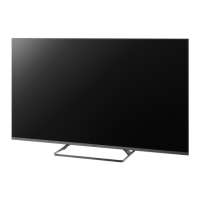
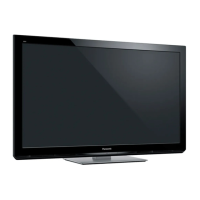
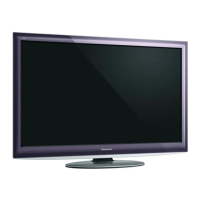
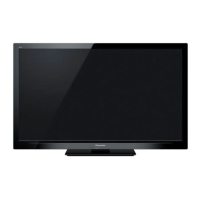
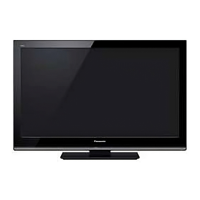
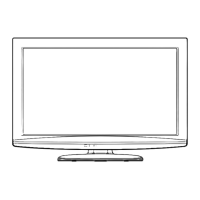
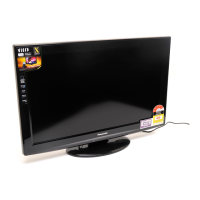
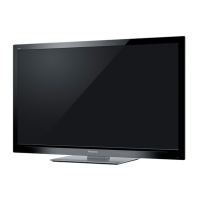

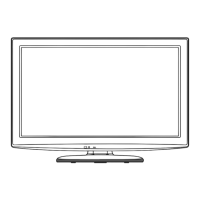
